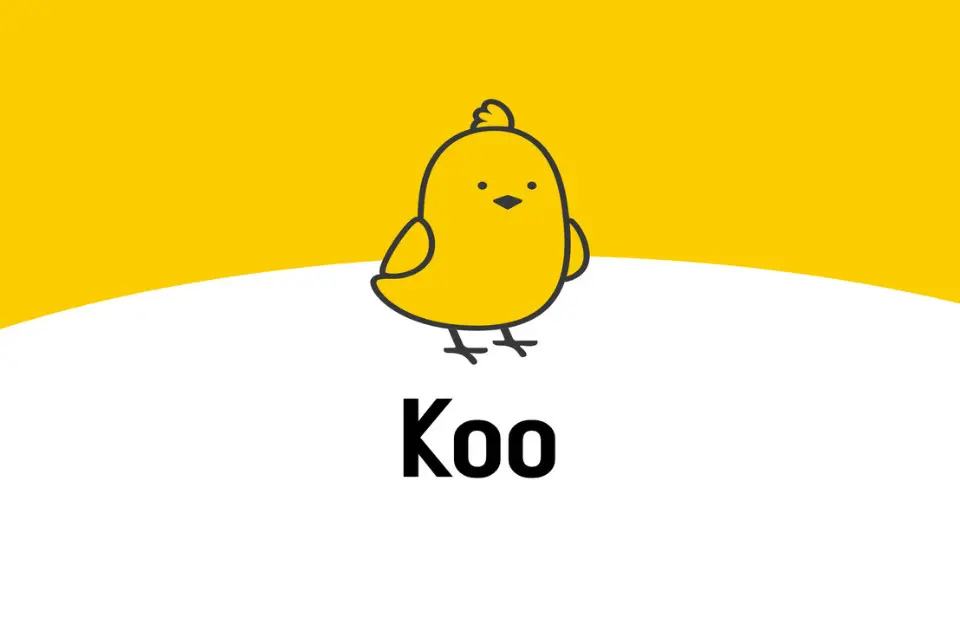KOO Shuts Down: India’s Twitter Alternative Fails to Gain Support
India’s Twitter alternative KOO shuts down due to funding issues and failed partnerships. Despite initial government backing and language inclusivity claims, KOO struggled with user growth and monetization. The closure highlights challenges in India’s tech startup scene and questions local alternatives’ ability to compete with global social media giants.
Indians could use KOO instead of Twitter when it came out in 2020. KOO will shut down because it is having trouble with money and trying to work with other companies but failing. Even though KOO became famous at first thanks to government support and claims of language equality, it needed help growing its user base and making money from its platform. The shutdown brings to light more significant problems in India’s tech startup scene and makes people wonder if local options can compete with global social media giants.
Background Of KOO
KOO was created in 2020 as an Indian option to Twitter to meet the needs of the country’s many language groups. While Twitter was having problems with content control, KOO got a lot of attention by giving people a way to talk to each other in Hindi, Tamil, and Bengali, among other Indian languages. The app’s interface looked much like Twitter’s, and users could use hashtags to post and tag others in comments or mentions. Even though people were excited about KOO at first, it took a lot of work to get more users than a small group because it faced tough competition and needed help forming intelligent relationships.
Challenges Faced By KOO
KOO was released in 2020 as an in-house alternative to Twitter. During its short but exciting life, it faced several complex problems. Even though there was a lot of excitement about the platform initially, and famous Indian leaders and celebrities backed it, it ran into significant issues that made it necessary to shut down.
From the start, KOO needed help building solid relationships with extensive media and internet companies. Aprameya Radhakrishna and Mayank Bidawatka, co-founders of KOO, said it took a lot of work to close deals that would have helped the company grow and become more financially stable. These relationships were significant for getting users more involved, adding more features, and competing with big social media sites worldwide.
The biggest problem, though, was what the owners called a “prolonged funding winter.” During this tough financial time, KOO wasn’t able to invest in important parts of its business, like technology infrastructure, attracting new users, and creating new products. Even though Tiger Global and Accel Partners gave KOO a lot of money, the company needed help keeping its growth going because of rising costs and tough competition.
Another critical problem for KOO was how to make money from user interaction. Compared to well-known global platforms with strong advertising models, KOO needed help getting money from its users. This financial mismatch worsened its funding problems and made it harder to achieve long-term survival.
KOO ran into problems when it tried to manage an Indian-language social media site that considered cultural differences and different languages. At first, this international method only drew a small group of users. However, getting work to get more people in India took a lot of work to use it. KOO’s plans to become a significant player in Indian social media were hampered by the fact that it had to compete with sites like Twitter, which already had a lot of knowledge and trust among users.
User Engagement And Political Alignments
At first, Indian leaders and celebrities backed KOO. It got a lot of attention when there were political problems with Twitter. However, people looking for neutral sites were turned off by what they saw as its alignment with particular political views.
Even though KOO tried to get a wide range of users, it needed help keeping people interested after its peak times. Users preferred well-known global platforms with many features and a good reputation, making it hard for KOO to become a viable option.
Technological And Financial Struggles
KOO had many technical and financial problems when it tried to run a big social media site. Its resources were stretched thin because running equipment and adding new features cost a lot, especially when money was tight.
Efforts to improve operations and cut costs, such as firing workers, showed that the company needed help with its desire to grow and to stay financially stable. KOO’s financial problems worsened when it wasn’t possible to market user transactions effectively and make significant income. This made the company’s choice to shut down even more likely.
Comparison With Global Competitors
When KOO tried to compete with global social media giants like Twitter, significant differences were observed in how users adopted the platform and its reliability. KOO attempted to meet the needs of India’s many different language speakers, but global rivals like Twitter stayed strong thanks to their large user bases and strict rules for content control.
Twitter’s platform had a familiar look and a lot of features that made it appealing to a wide range of people. For example, real-time reports, sharing multimedia, and confirmed accounts made users believe the platform more. KOO, on the other hand, needed help expanding beyond narrow groups.More ways to make money and improve technology are required to meet global standards.
A lot of work went into localizing material and working with well-known Indian people, but KOO still couldn’t attract and retain a diverse user base compared to well-known platforms that have been shown to be reliable and scalable on a global scale.
Public Reaction And Industry Implications
When social media users and businesspeople heard that KOO was closing, they had a range of responses. Some were upset that an Indian company had failed, while others saw it as a lesson for future tech businesses in the country.
The closing showed how hard it is for local startups to compete with global giants. It also showed how crucial long-term business plans and brilliant relationships are in the very competitive tech industry. The effects go beyond KOO’s fate; they change how people think about India’s innovation environment and its capacity to grow tech companies that can compete globally.
Conclusion
KOO went from being a potential Indian option to Twitter to being shut down, which shows more significant problems in India’s tech startup environment. Even though it had some early success and support from politicians, KOO needed help raising funds, forming relationships, and gaining users.
Its closing shows how hard it is to compete with well-known global platforms in a market with many of them. Future Indian startups will use what they’ve learned from KOO to guide their plans. These lessons will stress the importance of long-term growth, market differentiation, and resilience in managing the complicated global tech environment.


